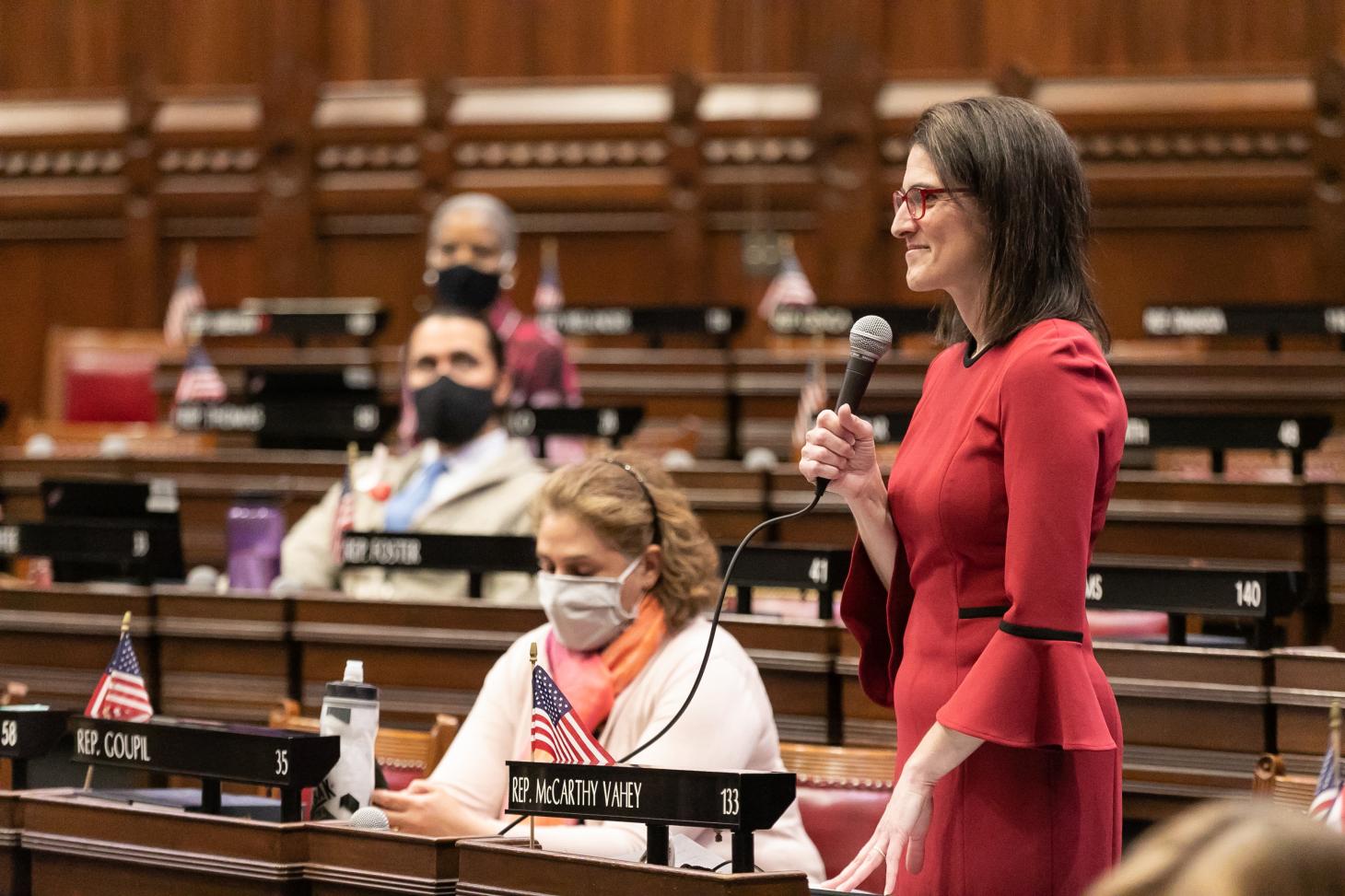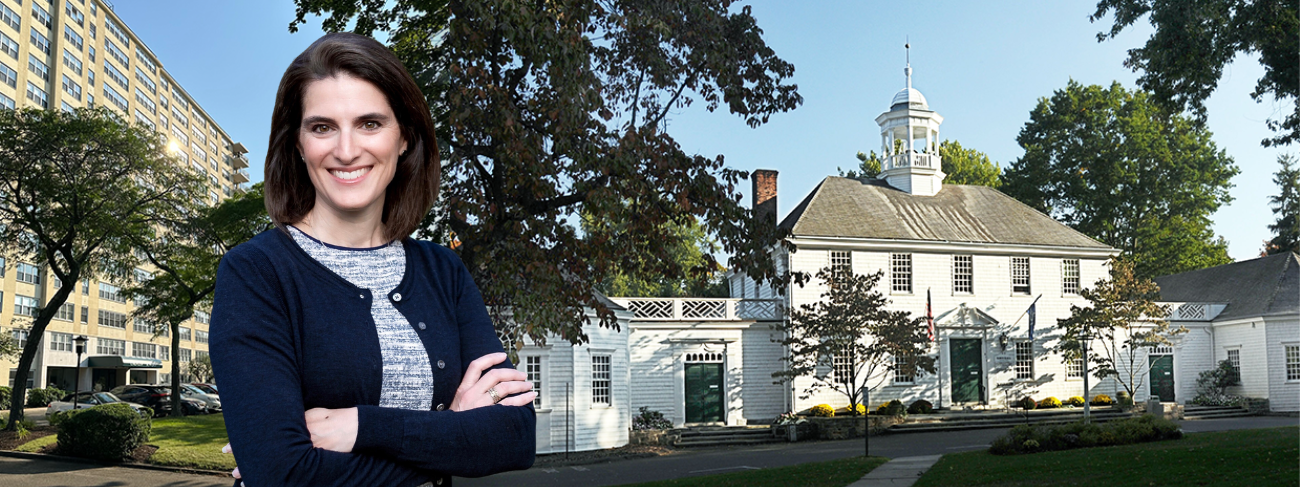Zoning bill a vital step toward a better CT

COVID has created tremendous shifts in lifestyle, work and transportation habits. Even for those who want things to remain just as they are, the way we live will continue to evolve and our zoning laws, contained in 8-2, must evolve, as well. Change is not coming; change is here. Read more in my recent OpEd below:
Opinion: Zoning bill a vital step toward a better CT
For 100 years, the Connecticut state law that governs zoning, statute 8-2, has outlined what our municipalities must do, may do and may not do as they create their local zoning regulations. COVID has created tremendous shifts in lifestyle, work and transportation habits. Even for those who want things to remain just as they are, the way we live will continue to evolve and our zoning laws, contained in 8-2, must evolve, as well.
Change is not coming; change is here. The influx of new residents to Fairfield County during the past year is reversing the decades-long loss of population that has hurt Connecticut’s economy. Our population is aging, and almost 40 percent of Connecticut’s 18- to 34-year-olds are living at home with their parents. Housing needs are changing, and the market reflects this shift. Our climate is changing, placing increased pressures on our environment, particularly in coastal communities like my own. Economic inequality is changing, and not for the better, exacerbated by COVID. Fairfield County, according to U.S. census data, is the most economically segregated county in the nation, with Connecticut No. 3 among states.
This legislative session, the General Assembly’s Planning and Development Committee considered multiple proposals designed to address our state’s demonstrated inequality of opportunity that is disproportionately impacting people of color and our poorest residents. We see the data and hear the stories that provide evidence of the need to address Connecticut’s housing crisis. While national building permits grew by 24 percent this past year, Connecticut housing permits fell by 20 percent. A recent story on a local mom’s Facebook page tells of the difficulty families have finding places to live in their price range. One woman called finding a home for her aging parents a unicorn. That doesn't begin to account for those facing eviction or foreclosure when the moratoriums are rescinded.
The final outcome of the zoning bills considered this session, HB 6107, An Act Concerning The Reorganization Of The Zoning Enabling Act And The Promotion Of Municipal Compliance, includes zoning reforms that give local communities, local zoning boards and locally hired planning professionals the ability and encouragement to more effectively drive that change, not be driven by it. Contrary to much of what has been said, this bill retains local control and even strengthens it in important ways, providing additional tools municipalities don’t currently have.
Though many are calling HB 6107 an affordable housing bill and an attack on private property rights, it is neither one. It is a zoning/planning bill, which will build a stronger foundation upon which critical steps toward housing that works for all can be taken. It is a step, incremental but vital, in that process — not a beginning and not an end.
The bill passed by the House strengthens the framework for smart and effective regulations; requires training for officials entrusted with decisions about property and land; offers guidance for existing boards and commissions so we are well prepared to proactively meet the challenges ahead; and allows residents to create an accessory dwelling unit, sometimes known as an in-law apartment, codifying a property right a large majority of municipalities already provide. It will enable communities to require more aggressive water and energy efficiency in developments and underscores the necessity of complying with and furthering federal fair housing goals. It will remove the term “character” from our statute to avoid capricious and unclear use, instead referring to physical attributes.
The bill will also establish a new commission on Connecticut’s development and future that will allow, with diverse input from across our state, for ongoing discussion, development and vetting of specific concepts related to land use, conservation, housing affordability and the infrastructure needs of our state.
Zoning, land use policy and planning are not usually the hottest topics in the General Assembly. This year’s at times emotionally charged conversations have focused largely on affordable housing, often referencing state statute 8-30g, the affordable housing appeal statute. They overlooked the fact that 8-2 (legally the “zoning enabling statute”), which is a primary focus of HB 6107, governs all land use — commercial, industrial and residential.
Housing policy is impacted by zoning policy and more action with respect to affordable housing is vital. We must invest in our cities, support both landlords who have been hurt by pandemic-caused income loss and renters facing eviction, and acknowledge the diverse housing needs of the residents of our state. Housing subsidies and tax credits, paid for out of our tax dollars, will not be enough. We need to use every available tool, including zoning, to plan for affordable, accessible housing and land use needs.
Our connection to one another, highlighted in both inspiring and tragic ways throughout the pandemic, means that what one community does impacts another. HB 6107 recognizes this fact and adds clarity, transparency and consistency to local zoning regulations so cities and towns can make thoughtful, forward-looking policy and decisions through their own local zoning regulations.
Let’s get the bill passed in the Senate and work together to create vibrant, economically strong and environmentally sustainable communities that will serve and benefit all residents.
State Rep. Cristin McCarthy Vahey, D-133, of Fairfield, is co-chair of the state Legislature’s Planning and Development Committee.





